Sumac Foraging and Preparation

First things first... no, we are not talking poison sumac! Secondly, it is extremely easy to tell the difference between poison sumac and Staghorn Sumac, Staghorn Sumac being the edible version. We see a ton of Staghorn Sumac growing in the Midwest, but it grows easily throughout most parts of the country. We have so much of it growing here it seems a little crazy sumac it isn’t used more in cooking in the Midwest. I suppose that's because when people here think sumac they automatically think it's poisonous!
Staghorn Sumac has a distinctive dark red or bright red staghorn shaped pod that you just can’t miss driving down any country road. The poisonous sumac has little green or white berries. I do not have a picture of it because I could not find any, but I encourage you to look online and so you can see the difference for yourself.
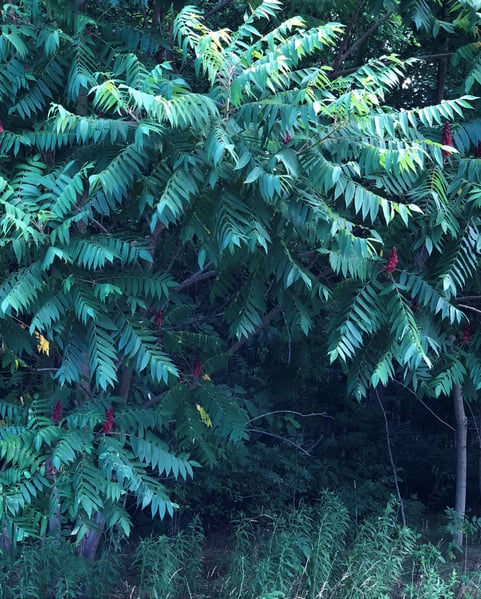
The best time to harvest sumac in the Midwest is late July through mid-September, August being ideal. The staghorn is fully ripe then and it still fresh before it has seen a lot of rain. Every heavy rain actually washes away a little of the sumac flavor as it is very water soluble. To harvest it, I like to look for a tree that is off a main road, I try not to forage along busy roads. My feeling is that all the car exhaust pollutes the plants alongside the road. I just pull over on the side of the road and cut some of the red staghorn off the tree by cutting right where the staghorn meets the branch with a pair of scissors or pruning shears. Keep in mind these trees are generally not incredibly tall so you should be able to reach some of the lower branches but you may need to bring a footstool with you just to be sure you can reach.
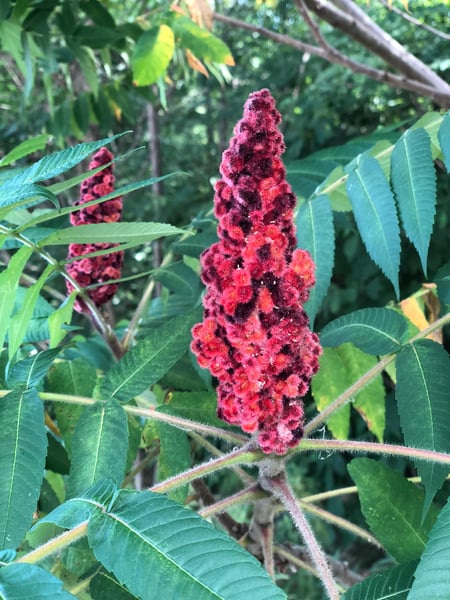
The easiest thing to do with sumac is to make a simple tea with the stag. If you think the adventure of foraging is exciting I certainly think making a simple tea at the end of your effort should be the perfect reward on a hot August day! If you like rosehip or hibiscus tea, I think you will like this tea. It has loads of antioxidants, a beautiful bright tart flavor and a little bitterness. The bitterness may be mellowed with some sugar or honey, if you like. You can also add fresh squeezed lemon for a sumac lemonade! All you do is put a few of the stags in a heat proof bowl and cover with boiling water. Let steep for 30 minutes or up to 2 hours and strain through a fine strainer or cheese cloth. Serve cold or hot.
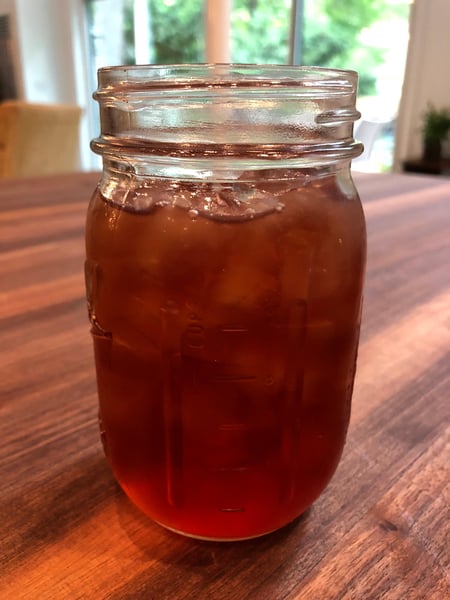
Sumac has a real tartness and is used somewhat like lemon in the Middle East where it is a very common spice. To prepare the sumac as a spice, I start by removing the little individual red berries (drupes) that make up the stag. I take all the berries and put them in the blender and process for a minute or two. The red fluffy outer part of the berry separates from the seed in the center. I put the mixture into a fine strainer and rub the mixture. The red fluff will fall through the strainer leaving the seeds behind. I discard the seeds and put the red fluffy stuff on a parchment lined sheet pan. I toast this in the oven at 300 degrees for just about 5 to 8 minutes. The spice will just start to get aromatic. I let this cool and put it in an airtight jar. The sumac spice will keep nice and fresh for about a year.
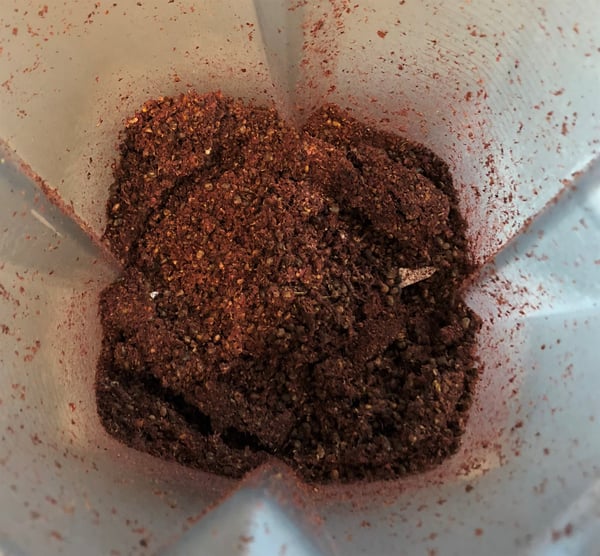
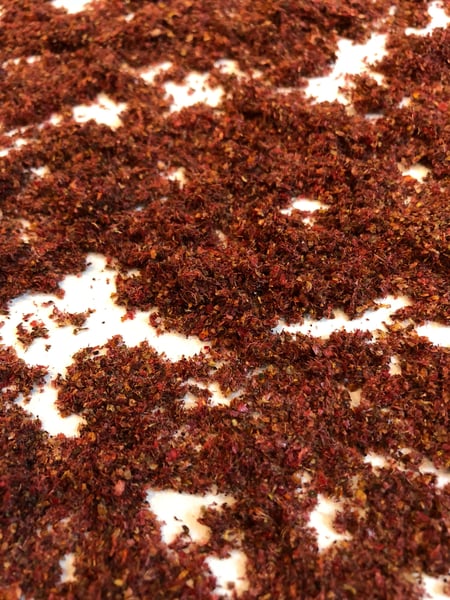
Sumac is often used in spice blends but you can finish a dish with it just like you would with a little fresh cracked pepper or salt. It is perfect on grilled lamb, rice, chickpea or roasted eggplant dish like I made here. Toss it in a summer green salad or with fresh cucumbers. Its bright fresh lemony pop ads a wonderful contrast and the beautiful red color is a true showstopper!
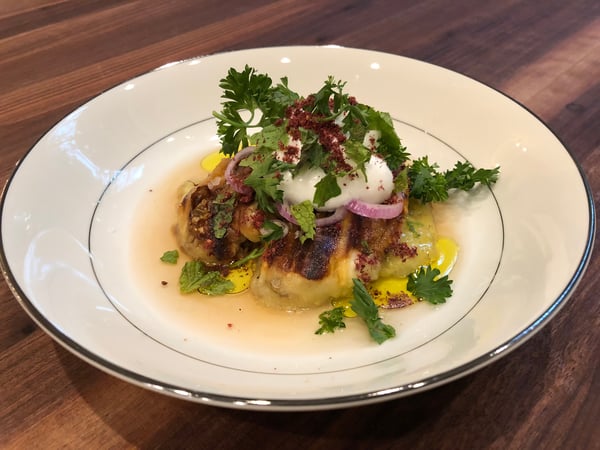
To learn all about working with fresh herbs and spices, check out The Chopping Block's Cooking Lab: Flavor Dynamics class coming up next month at Lincoln Square.

